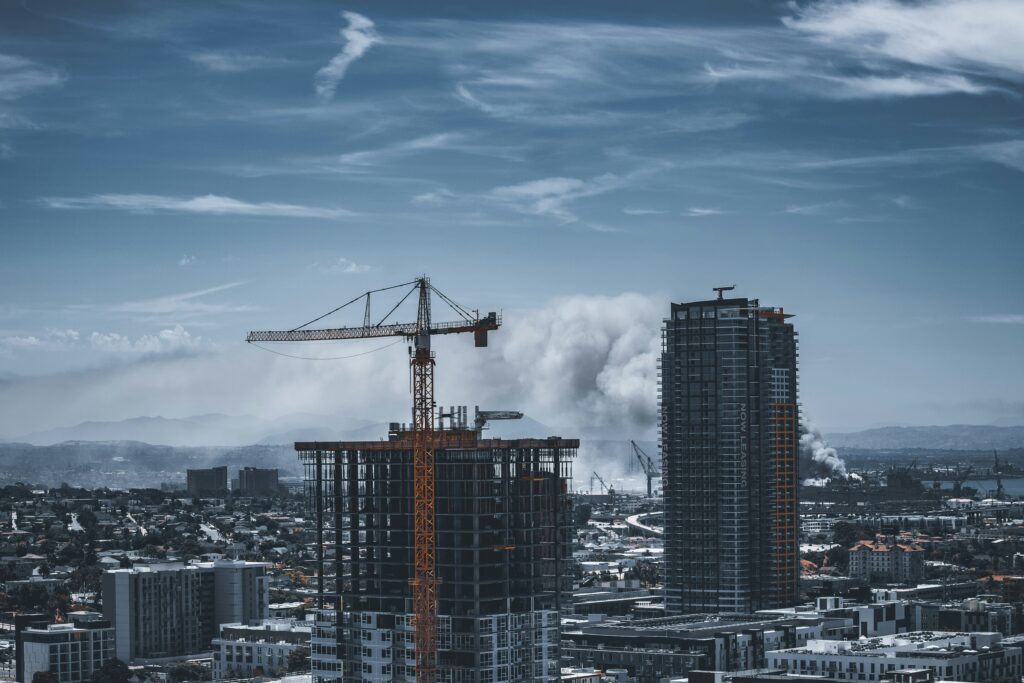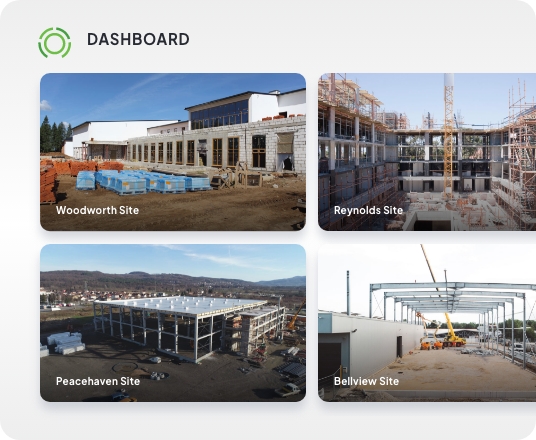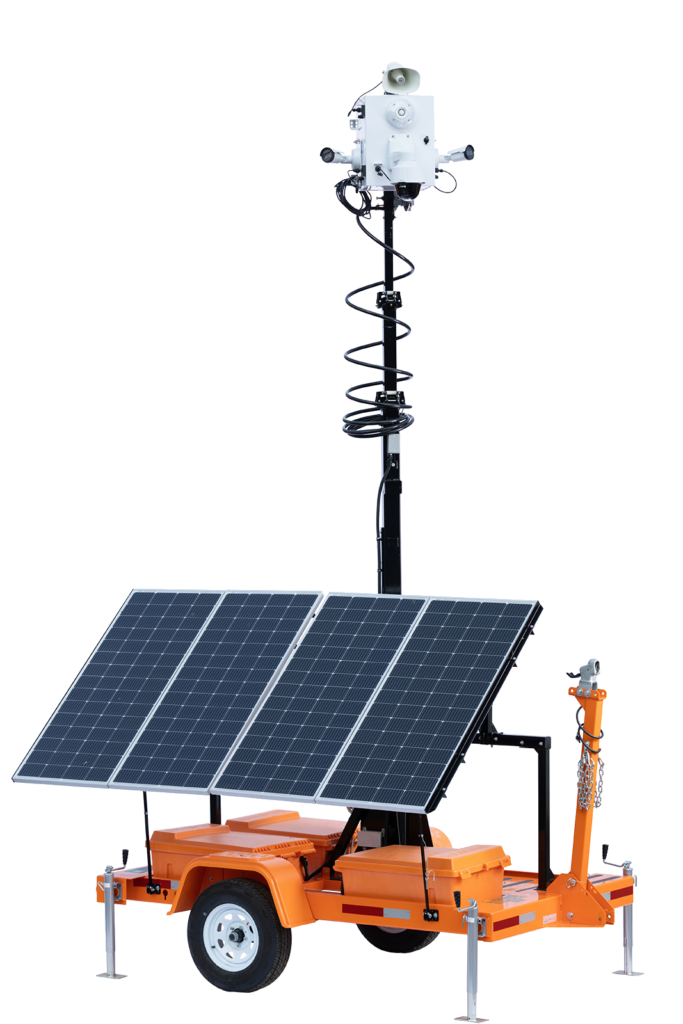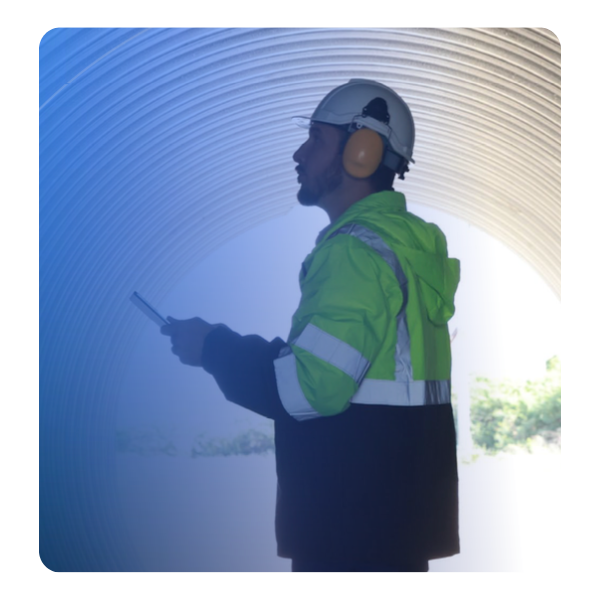A Project Manager’s Guide to Builder’s Risk Insurance and Site Security Requirements
Everything You Need to Know to Protect Your Jobsite and Meet Insurance Standards
Construction projects face numerous risks throughout their lifecycle, and these challenges can quickly derail even the most carefully planned builds. Theft and vandalism are among the most immediate threats; when valuable materials are stolen or equipment is vandalized, the financial losses can be significant, potentially costing millions and causing delays that set a project back by weeks or months.
In addition to theft and vandalism, construction projects face significant risks from natural disasters such as storms, floods, and fires. These events can cause severe damage, leading to unanticipated repair costs and delays that can disrupt even the most meticulously planned projects. Builder’s risk insurance provides a vital layer of protection, helping construction teams navigate these challenges. “Building with Confidence: A Project Manager’s Guide to Builder’s Risk Insurance and Site Security Requirements” explains the key aspects of builder’s risk insurance and details the site security measures that are often the responsibility of the project manager to ensure comprehensive coverage.
Let’s dive in.
Understanding Builder’s Risk Insurance
Builder’s risk insurance, also called “course of construction” insurance, is specialized property insurance designed
to protect buildings while under construction. This temporary policy remains in effect until the project is completed and is a critical component of a comprehensive risk management strategy.
What Builder’s Risk Insurance Covers
The coverage provided by builder’s risk insurance can vary between carriers, and policies are often customizable to
address the specific risks of a project. Project owners must work closely with their providers to ensure all potential risks are covered. Generally, builder’s risk insurance offers comprehensive coverage for a wide range of exposures, including:
- Fire and water damage
- Weather-related damage
- Theft and vandalism
- Transit and off-site storage
- General liability (injuries to non-workers)
- Structural collapse
- Soft costs (such as lost revenue, taxes, and loan interest due to project delays)
What Builder’s Risk Insurance Does Not Cover
Equally important is understanding what builder’s risk insurance typically does not cover. Policies generally exclude:
- Normal wear and tear on equipment and materials
- Employee theft
- Professional liability (e.g., accidents covered by liability insurance)
- Contractual liabilities
- Mechanical breakdowns
- Earthquakes and landslides
- Governmental actions
What May Affect Coverage
Coverage under builder’s risk insurance can be significantly affected, and claims may even be denied if “reasonable security” measures are not implemented on the construction site. Underwriters often stipulate specific security requirements as a condition of coverage, and failure to meet these standards can result in partial or total denial of a claim in the event of a loss. This is why it is crucial for project managers not only to meet but exceed these site security requirements. By doing so, they make the project fully protected, reducing the risk of uncovered losses and demonstrating a commitment to proactive risk management to insurers. Exceeding security requirements not only safeguards the project but also strengthens the likelihood of a favorable outcome should a claim be made.

Site Security Requirements for Builder’s Risk Insurance
The insurance marketplace has recently hardened due to several substantial fire losses involving wood-frame construction projects. As a result, builder’s risk insurance underwriters are imposing additional safeguards to reduce their exposure to loss. These safeguards, typically outlined in an underwriter’s minimum site security requirements, may vary depending on the underwriter, but they generally address perimeter coverage, monitoring, intrusion detection, deterrents, and power.
Site Perimeter Coverage
To meet most perimeter coverage requirements, the site must have at least four surveillance units, each equipped with at least two cameras. These cameras should provide complete coverage of the site perimeter, including entry and exit points such as gates, doors, and windows, and high-traffic areas like storage zones, offices, and equipment yards. Cameras should be positioned at elevated locations to maximize coverage and eliminate blind spots susceptible to theft or vandalism.
Each surveillance unit must also include at least two infrared (IR) or thermal imaging cameras for visibility in all lighting conditions, particularly in low-light environments. A third fisheye camera should also be installed to cover the area directly beneath the unit. These measures provide comprehensive site coverage by eliminating blind spots.
Real-Time Monitoring
A UL-certified monitoring center must monitor the surveillance units, which guarantees oversight by qualified professionals. TMA Membership and Five Diamond certification offer further assurance of quality and expertise.
Continuous monitoring of the site perimeter, even during non-working hours, is required to reduce the risk of security breaches during periods of low activity. The surveillance units must be armed during these non-working hours, with a failsafe method to automatically activate the system according to a predetermined schedule. The monitoring center must also provide round-the-clock oversight to address potential issues and make sure the system remains operational and capable of detecting intrusions or security breaches at all times.

Intrusion Detection
The surveillance unit’s cameras should also be able to detect and differentiate between intrusions by people or vehicles, automatically sending these events to the monitoring center for verification and immediate response.
The cameras should be equipped with automatic visual content analytics and zone calibration to minimize false alerts. This setup allows the monitoring center to verify incidents and respond promptly. Video feeds should also be accessible from mobile devices to enable real-time monitoring.
Deterrent Features
To effectively deter intruders, the system should include essential features such as live audible voice-over capabilities, allowing security personnel to communicate directly with intruders at any point along the site perimeter. Additionally, strobe or lighting features are crucial, as they provide visual indicators that alert intruders to the fact that they have been detected, further discouraging unauthorized access.
Power and Backup Systems
To maintain uninterrupted operation, the surveillance unit must include a tamper-proof backup battery system with an eight-hour lifespan. Solar-powered units are also viable, provided they have a 72-hour lifespan and are installed in areas with reliable year-round sunlight.
Daily health checks and camera inspections are critical to avoid coverage loss or equipment malfunction. Additionally, the system should have a battery backup capable of powering the entire setup for at least four hours during an AC power outage. Monitoring of all batteries, whether primary or backup, is essential, with alerts notifying site personnel to restore power if battery life drops to two hours. Any sudden or unexpected loss of backup power should also trigger a response akin to handling a site intrusion.
TrueShield: A Security Solution to Satisfy Builder’s Risk Requirements
TrueShield, an advanced security solution from TrueLook, has been purposefully designed to meet the stringent requirements of builder’s risk insurance. TrueShield offers unparalleled protection for construction sites and similar environments, shielding them from theft, vandalism, and unauthorized entry. With continuous security recording and advanced security protocols, TrueShield minimizes risks and ensures that projects progress smoothly and securely. This robust system is indispensable for contractors and project managers committed to safeguarding valuable on-site assets.

Key Features of TrueShield
- Includes up to three infrared cameras per unit
- After-hours motion alerts are investigated in real-time by trained monitoring professional
- Operates through a Five Diamond, UL-certified monitoring center for off-hours surveillance and rapid emergency response
- Offers live audible talkdown capabilities via bullhorn to deter intruders
- Strobe lights and sirens for immediate audio-visual deterrents
- Flexible power options, including solar or 110V, with tamper-proof backup batteries
- Features GPS tracking for real-time unit location monitoring
The Future of Builder’s Risk Insurance
The future of builder’s risk insurance will likely be shaped by the integration of advanced technologies in construction site security. Surveillance systems are expected to become more sophisticated, with artificial intelligence (AI) and intelligent technology playing a central role in this evolution. AI-powered analytics could enhance security by detecting unusual behavior, automating alerts, and predicting potential threats based on historical data. Biometric access controls, such as fingerprint and facial recognition, may become standard, ensuring that only authorized personnel can access specific areas and reducing the risk of unauthorized entry.
Drones for aerial surveillance are also anticipated to become more common, offering rapid response capabilities and comprehensive coverage for large or complex construction sites.
As these technologies advance, cloud-based data management and Internet of Things (IoT) devices are expected to play an integral role in site security. Cloud systems could provide secure, remote access to vast amounts of data, while IoT devices may create a more interconnected and responsive security environment.
These technological advancements in site security have the potential to help builders meet increasingly stringent builder’s
risk insurance requirements while contributing to safer and more efficient construction sites. By reducing the risk of theft, vandalism, and other costly incidents, these innovations could ultimately lead to more secure and resilient construction projects.
Building With Confidence
A Project Manager’s Guide to Builder’s Risk Insurance and Site Security Requirements

